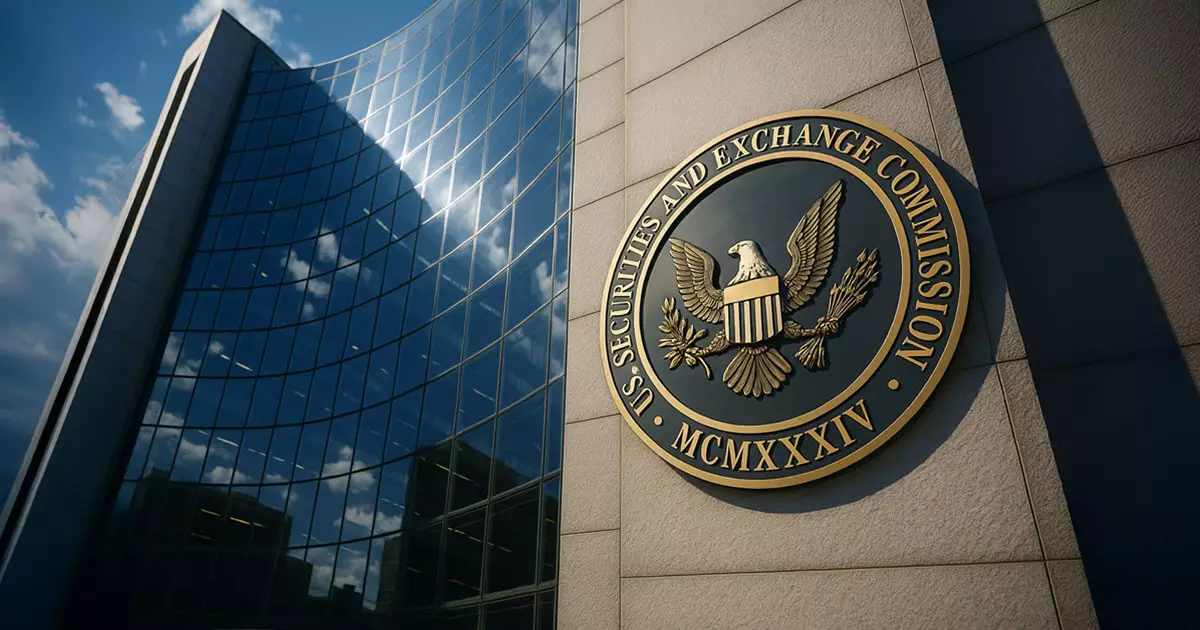The recent guidance issued by the U.S. Securities and Exchange Commission (SEC) marks a critical juncture in the evolution of digital asset regulation, but not without its caveats. While SEC Commissioner Hester Peirce accurately classifies this guidance as “incremental, not comprehensive,” the implications of these new rules can’t be underestimated. Incremental progress often lays the groundwork for groundbreaking change. In this context, the SEC’s updates might seem modest, yet they provide essential clarity that could empower institutions to dare venture into the often murky waters of cryptocurrencies. As a proponent of innovation within regulatory boundaries, I rally behind these adjustments—albeit with a keen eye on what lies ahead.
Chainlink’s Strategic Engagement: A Model for Collaboration
One of the keys to the SEC’s recent shift lies in its closed-door collaborations with Chainlink Labs, exemplifying the importance of public-private dialogue in shaping effective regulatory frameworks. Chainlink’s proactive approach in demonstrating how smart contracts can adhere to existing securities laws has not only strengthened its standing but also provided the SEC with a fresh narrative regarding digital assets. This level of engagement shows that the financial sector is not only open to regulation but actively participating in its shaping. As we navigate a space often filled with skepticism, partnerships between regulators and blockchain innovators may become crucial in advancing the regulatory discourse, leading to a more balanced and constructive environment.
The Dual-Edged Sword of Digital Asset Classification
The SEC has clarified the treatment of non-security cryptocurrencies, such as Bitcoin and Ethereum, under existing customer protection rules. While these distinctions may provide the clarity that broker-dealers need to operate with confidence, they come with an inherent risk. By highlighting that cryptocurrencies not classified as securities do not receive the same level of investor protection, the SEC introduces a critical consideration for those operating in this sphere. Investors are effectively gambling on their digital asset holdings without the safety net of the Securities Investor Protection Act (SIPA). This dual-edged nature of classification reiterates the need for greater transparency and education around asset risks, especially as institutions begin to embrace this new paradigm in earnest.
The Financial Landscape: Embracing On-Chain Solutions
One of the more exciting aspects of the SEC’s updated guidance is its endorsement of Distributed Ledger Technology (DLT) for use by transfer agents in maintaining securities records. This adventurous embrace of technology signals a larger acceptance of blockchain’s potential in traditional finance. The notion that U.S. financial institutions could migrate core fund operations on-chain paves the road to significant efficiencies and economic viability—which is both thrilling and daunting. As the global fund-administration market hovers around a staggering $132 trillion, the potential for innovation is enormous. However, as we usher in this automation and modernization, we must remain vigilant about how these technologies can be mismanaged or misinterpreted in the changing regulatory landscape.
Chainlink: The Transformative Power Broker
Amid this regulatory evolution, Chainlink showcases itself as an indispensable facilitator, positioned effectively as the connective tissue between traditional finance and the burgeoning domain of compliant on-chain finance. The fact that Chainlink’s technology is already empowered in real-world institutional applications vouches for its credibility and reliability. As it continues to work closely with regulatory bodies, it may well establish the gold standard for middleware solutions that adhere to compliance needs. For financial entities reluctant to engage with cryptocurrencies due to regulatory uncertainty, Chainlink presents a potential lifeline that bridges conservative practices with cutting-edge technological progress.
Revolution via Regulation: A Path Forward
While skepticism about the real effects of the SEC’s guidance persists, the shift in narrative cannot be ignored. The broader acceptance of public blockchains for institutional applications is monumental. For years, regulatory gridlock stifled innovation and left the U.S. lagging behind global counterparts. Now, we see an opportunity to utilize regulations as a stepping stone to normalization within the digital asset realm. Ultimately, this moment is not merely about compliance; it’s about harnessing the transformative potential of decentralized technology for finance’s future, all while treading carefully on the regulatory path ahead. The balance between protection and progress is delicate, but the SEC’s incremental steps indicate we are moving toward a more harmonized financial ecosystem.


Leave a Reply